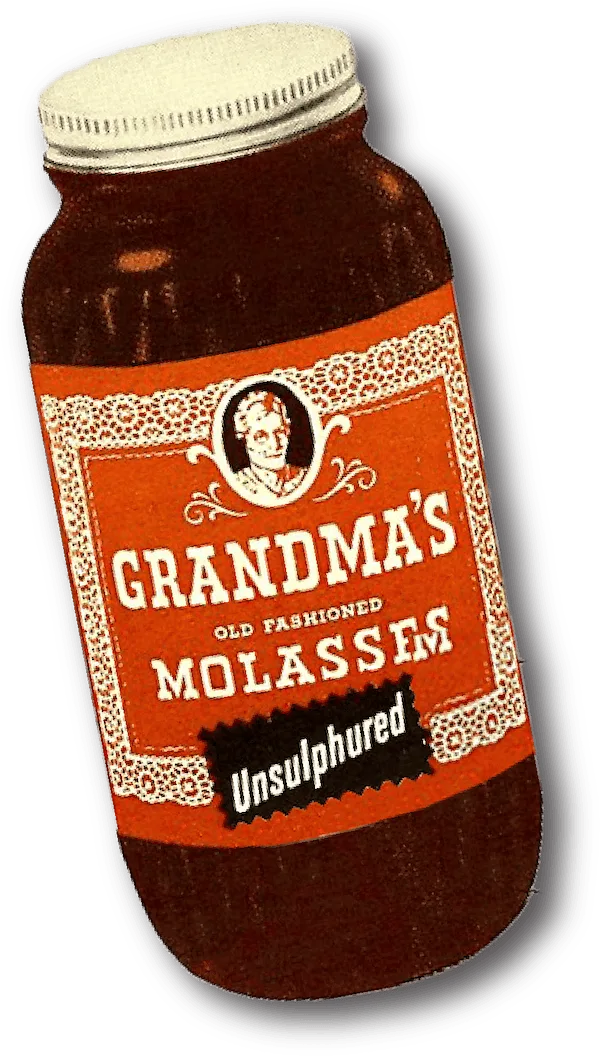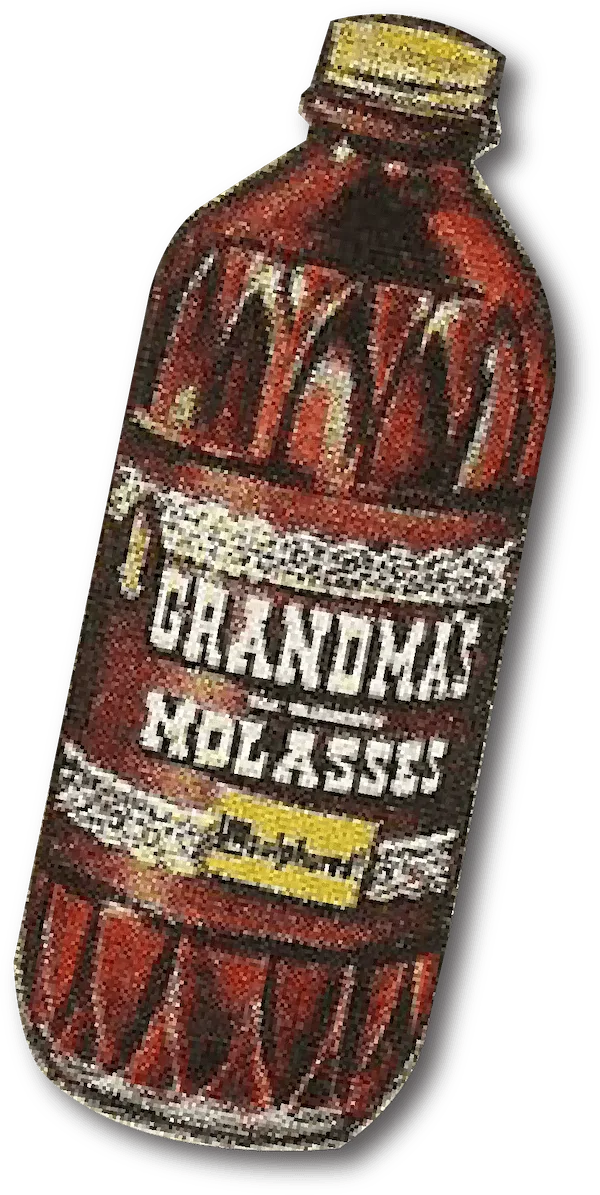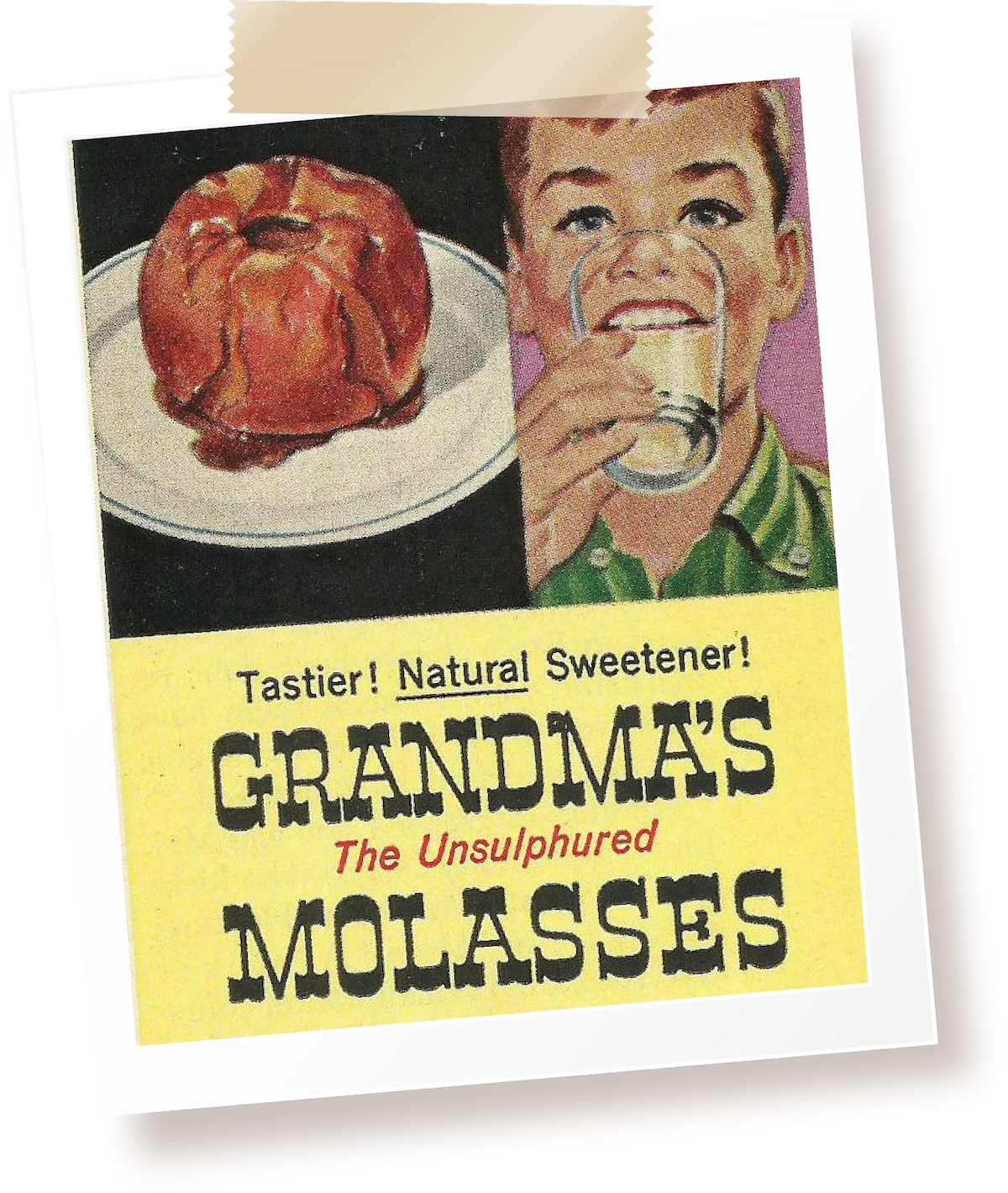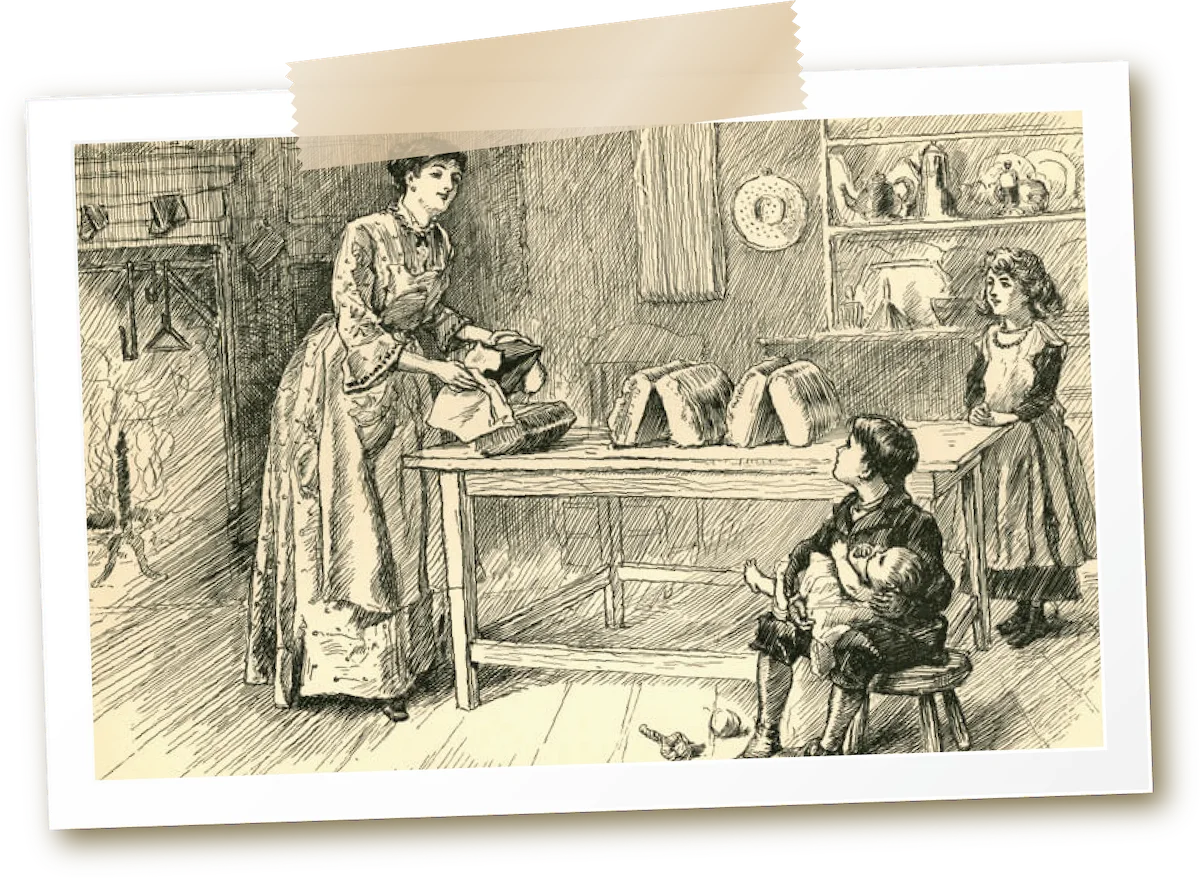In recent American history, molasses dates back to 1493, when Columbus introduced it to the West Indies. Molasses became an important product in Colonial trade. The founders of Georgia used molasses as a reward for settling there.
Baking was the most popular way to prepare food in the Colonies, so molasses became associated with baked goods: doughnuts, mince pies, pumpkin pies, gingerbreads, baked beans, corn bread, cookies and cakes. Maine children poured it over buttered bread for Sunday night supper, while molasses formed the base under the crumb topping of Pennsylvania Dutch shoofly pie. In England, any candy made of molasses was called toffee, which later evolved into taffy.
The most important spirit that warmed the colonists was rum, made principally from molasses. Before the Revolutionary War, it is estimated that colonists downed an average of four gallons of rum a year. Some historians argue that it was not the British tax on American tea that precipitated the Revolutionary War but the Molasses Act of 1733, which imposed a heavy tax on sugar and molasses coming from anywhere except the British sugar islands in the Caribbean. There was such widespread evasion of this tariff that it was lowered in 1764.
Molasses remained the most popular sweetener through the nineteenth century. Used to sweeten drinks as well as confections, molasses was also used to flavor meat, especially pork and ham. By the 1830s, a bride’s popularity was measured by the number of layers of molasses stack cake guests brought her. Grandma’s Molasses carries on that great tradition today!




